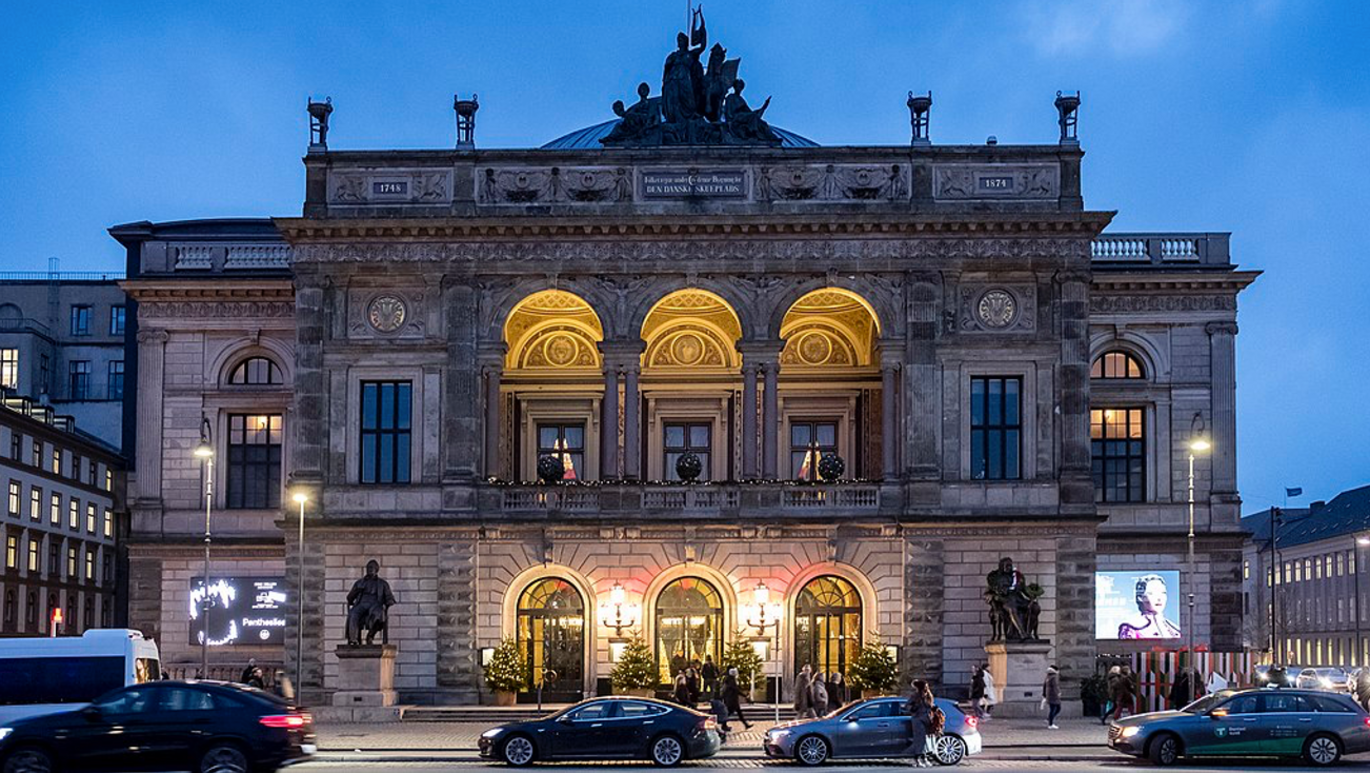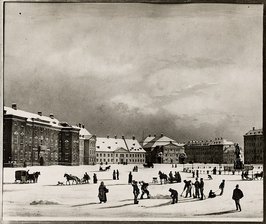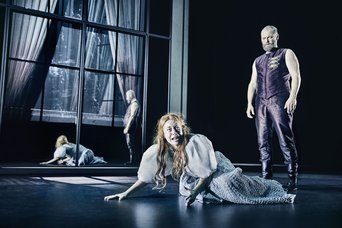Drama in Denmark
While the Royal Danish Theatre was founded in back in 1748, this overview of drama in Denmark extends from after World War II to the beginning of the twenty-first century touching on experimental and socially critical theatre groups in the 1960s and '70s, the exploration of aesthetics thereafter and some contemporary playwrights.

As well as the Royal Danish Theatre (Det Kongelige Teater) in Copenhagen, which was founded in 1748, Denmark has a number of regional theatres plus a wealth of independent theatre groups.
Naturalism and realism remained influential after the Second World War, e.g. in H. C. Branner’s Søskende (1952) (Siblings) and Thermopylae (1958), the latter an assessment of the dilemma of humanism. Impulses from abroad helped reinvigorate Danish drama in the 1950s and 1960s, notably French absurdism, English social realism, and the work of Bertolt Brecht (in exile in Denmark 1933-39).

Erik Knudsen’s (1922-2007) innovative revue comedy Frihed – det bedste guld (1961) (Freedom – the Best Gold) was influenced by Brecht, while Klaus Rifbjerg’s Udviklinger (1965) (Developments) drew on Pirandello. Both also wrote drama for television, but the work of Leif Panduro had a more significant impact on the genre of television drama, his very popular plays including Farvel Thomas (1968) (Good bye, Thomas) and Bella (1970). In his musical Teenagerlove (1962), Ernst Bruun Olsen (1923-2011) investigated the entertainment industry.
Experimental and socially critical theatre groups, 1960s and '70s
The 1960s and 1970s saw the birth of many experimental or socially critical theatre groups. Of lasting importance is the Odin Theatre (Odin Teatret) under the leadership of Eugenio Barba. First established in Norway, it moved to Holstebro in Jutland in 1966. This multicultural theatre group has gone on to achieve international fame, and their Ur-Hamlet, based on the Denmark Chronicle by Saxo Grammaticus that was Shakespeare’s own source, and involving actors, dancers, singers and musicians from all over the world, was staged at Kronborg Castle in Elsinore in August 2006 to critical acclaim.

Exploring aesthetics and notable contemporary playwrights
In the 1980s and 1990s, social concerns in the theatre gave way to the exploration of aesthetic and artistic effects, with young directors beginning to find new, more fragmented means of expression. Astrid Saalbach (b. 1955) made her début in 1981 with a play for radio, Spor i sandet (Footprints in the Sand). Her stage plays include Morgen og Aften (1993) (Morning and Evening, produced in London in 1995), part of a trilogy with Det velsignede barn (1996) (The Blessed Child) and Aske til aske, støv til støv (1998) (Ashes to Ashes, Dust to Dust), which established Saalbach as the leading playwright of her generation. While Saalbach’s early training as an actress helped underpin her mastery of dialogue, Nikoline Werdelin (b. 1960) began her career as an artist and graphic designer, her work developing from cartoons in the Danish newspaper Politiken to include drama. Among her plays are Martas tema (2005) (Martha’s Theme) and Akvariefuglen (2006) (The Aquarium Bird). The actor and novelist Gerz Feigenberg (1956-2011) also wrote for the stage, his Tilfældighedens engel (The Angel of Chance) produced at the Royal Danish Theatre in 2000. Another notable playwright of this generation is Line Knutzon (b. 1965), the social criticism of her work exemplified by De usynlige venner (1992) (Invisible Friends).
THIS ARTICLE HAS BEEN PUBLISHED POSTHUMOUSLY.
Further reading:
- S.H. Rossel, ed., A History of Danish Literature. (Lincoln and London: University of Nebraska Press, 1992)